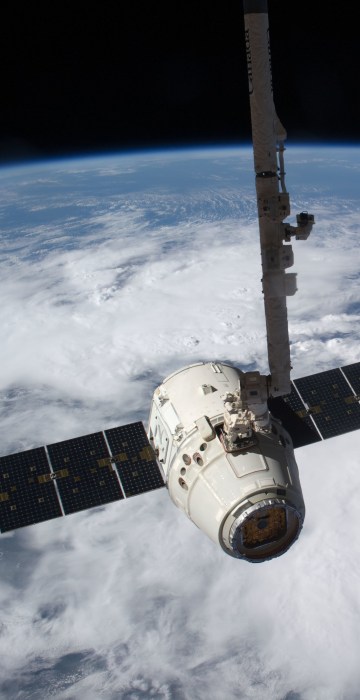
Science News
Month in Space: June 2012


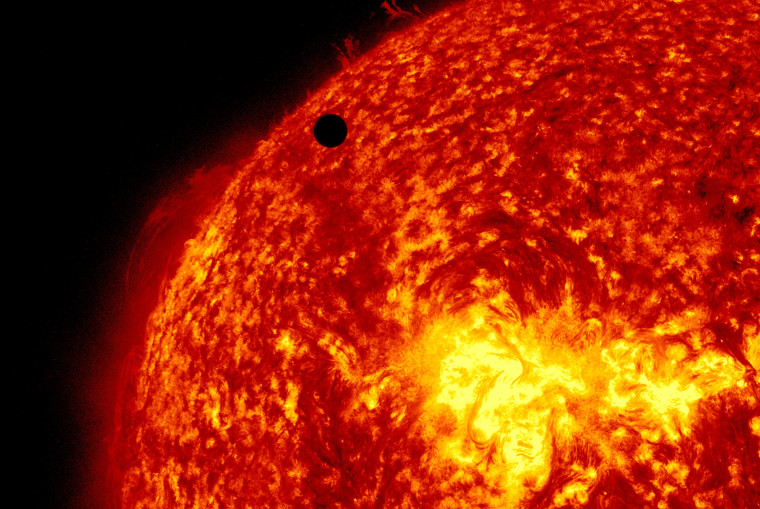
Venus has its day in the sun
NASA's Solar Dynamics Observatory captures a view of Venus silhouetted against the sun on June 5. Such a transit occurred previously in 2004, but the next time Venus passes over the sun as seen from Earth will be in the year 2117.
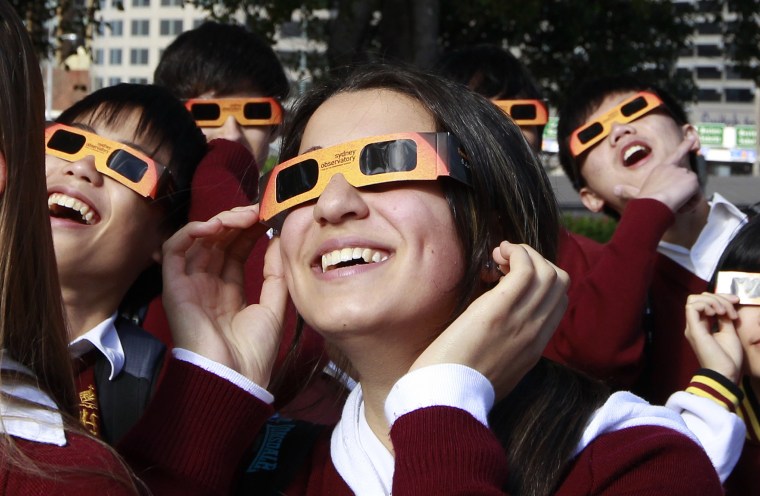
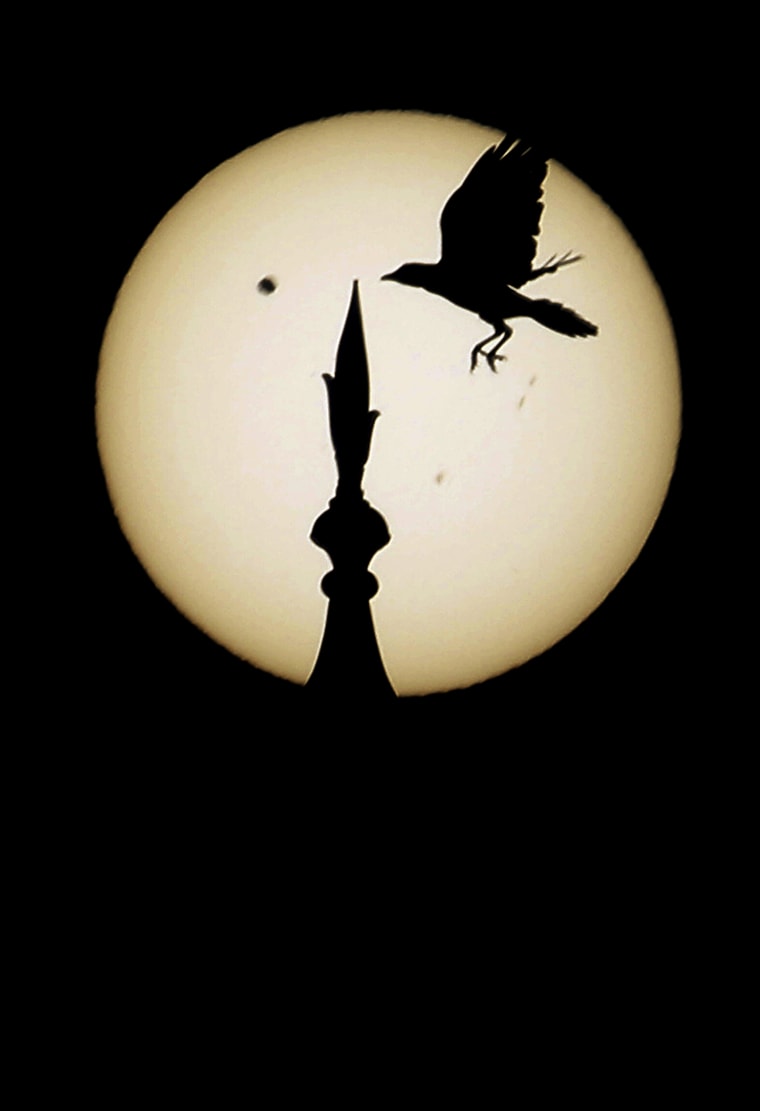
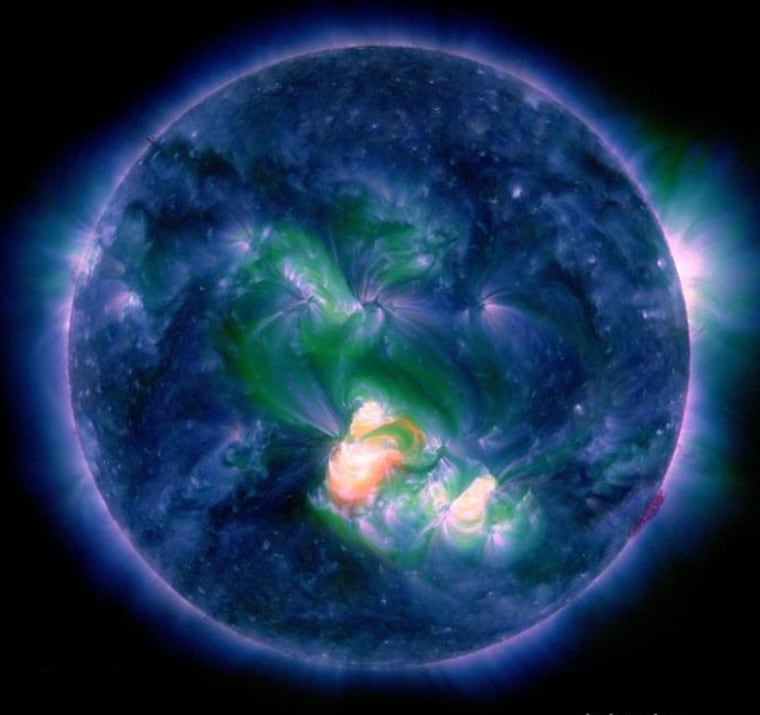

Enterprise at sea
A flotilla surrounds NASA's prototype space shuttle Enterprise as it is carried by barge past the Statue of Liberty up the Hudson River on June 6, en route to its permanent home at New York's Intrepid Sea, Air and Space Museum. The Enterprise, which was used only for atmospheric testing, was hoisted by crane onto the flight deck of the retired Intrepid aircraft carrier for display.
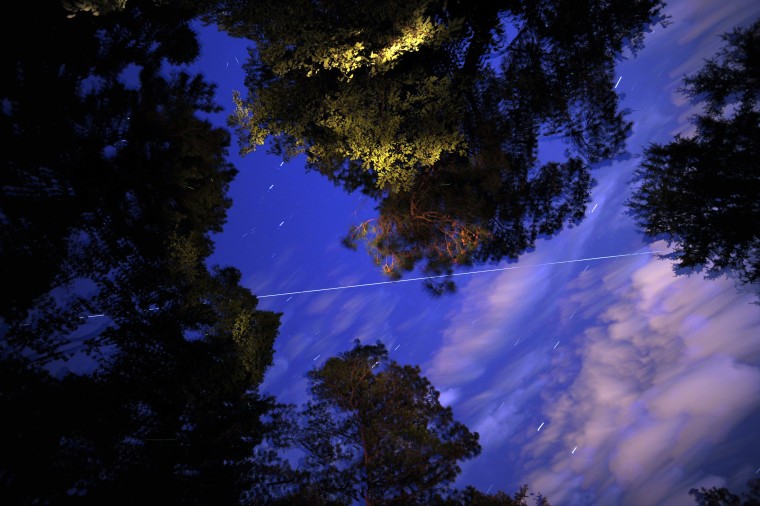
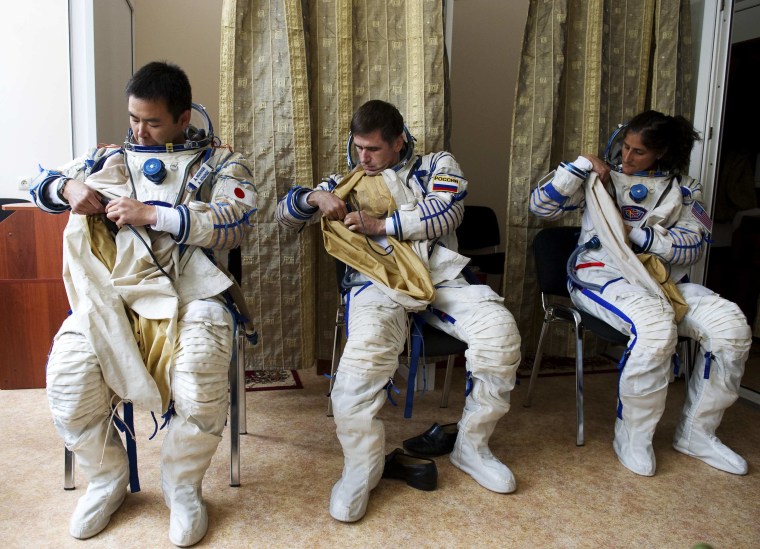
Ready for a ride
Japanese astronaut Akihiko Hoshide, Russian cosmonaut Yuri Malenchenko and NASA astronaut Sunita Williams prepare their spacesuits during a training exercise at Russia's Star City training center on June 13. The three spacefliers are getting ready for their launch to the International Space Station in July.

In the Dragon's lair
NASA Administrator Charles Bolden, left, and SpaceX founder Elon Musk answer questions in front of the SpaceX Dragon space capsule at the company's rocket development facility in McGregor, Texas, on June 13. The scorched spacecraft was brought back to Texas after its round-trip flight to the International Space Station.
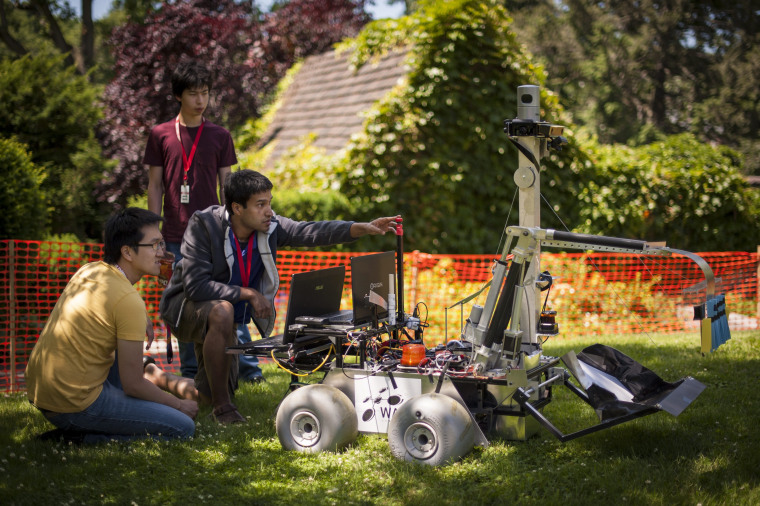
Reveille for robots
Members of the University of Waterloo Robotics Team from Canada test their robot on a practice field at the Worcester Polytechnic Institute in Massachusetts on June 15, in preparation for the NASA-WPI Sample Return Robot Centennial Challenge. None of the teams in the competition was able to win this year's $1.5 million prize.
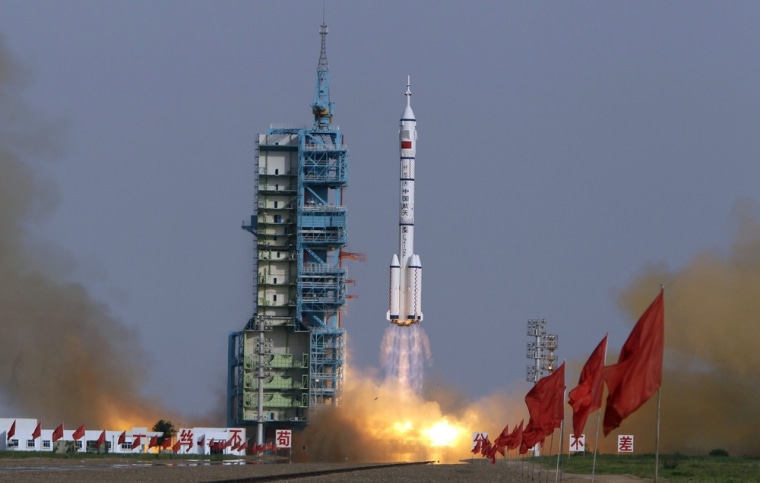
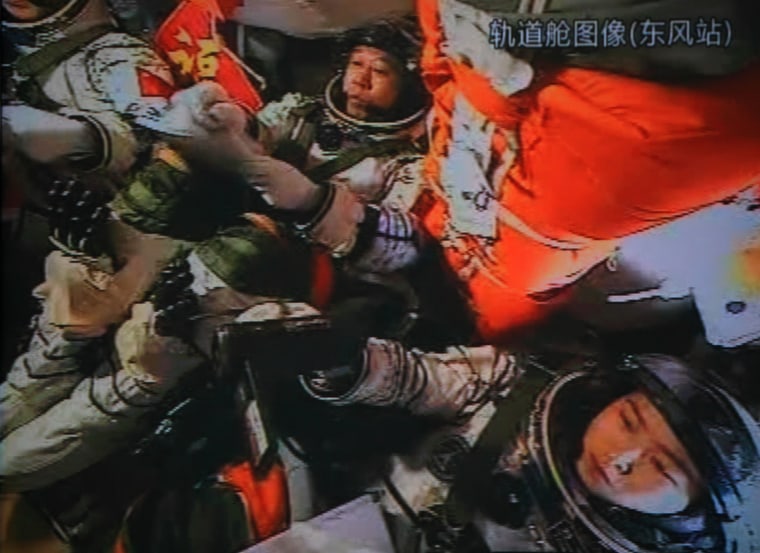
Trio in a 'Divine Vessel'
An image on the giant screen at the Jiuquan Satellite Launch Center shows Chinese astronauts Liu Wang, Jing Haipeng and Liu Yang in their Shenzhou 9 spacecraft on June 18, just before their docking with the Tiangong 1 orbital module. Shenzhou is Chinese for "Divine Vessel," while Tiangong means "Heavenly Palace."
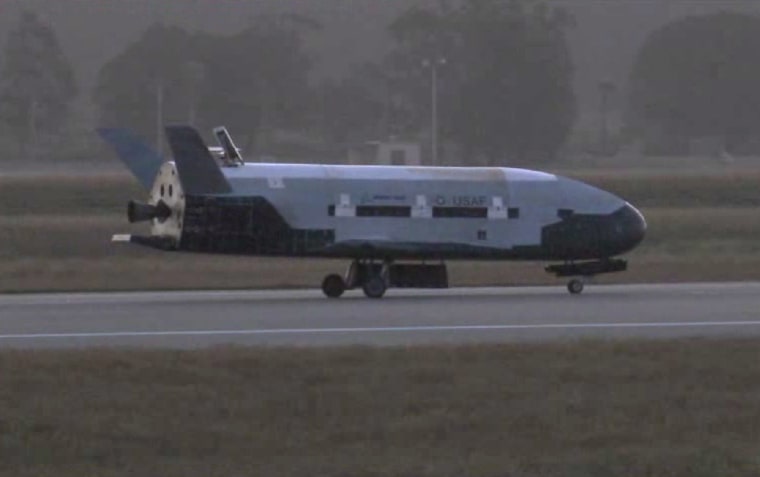
Secret space plane lands
A June 16 image made available by the U.S. Air Force shows the X-37B unmanned spacecraft landing at Vandenberg Air Force Base. The spacecraft, which was launched from Cape Canaveral Air Force Station in Florida in March 2011, conducted in-orbit experiments during the 15-month clandestine mission, officials said. It was the second such autonomous landing at the base.
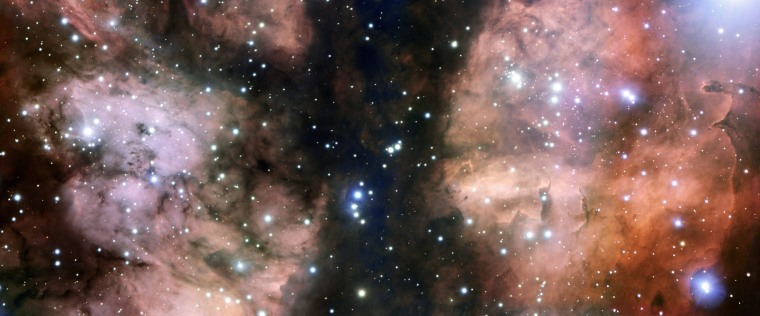
War and Peace Nebula
This image from the European Southern Observatory's Very Large Telescope in Chile, released June 20, provides the most detailed view yet of the star-forming nebula NGC 6357. The cloud of gas and dust, dotted with newborn stars, is also known as the War and Peace Nebula. Scientists gave the nebula that nickname because infrared images of NGC 6357 have shapes that look like a dove and a skull. That effect can't be seen in this visible-light image, however.

Centaurus A's rainbow
This view of the galaxy known as Centaurus A, released by the European Southern Observatory on May 31, highlights clouds of gas in shades of green, orange and yellow. Astronomers used the Atacama Large Millimeter/Submillimeter Array, or ALMA, to detect the clouds, which are obscured in visible light by a dark band of dust.
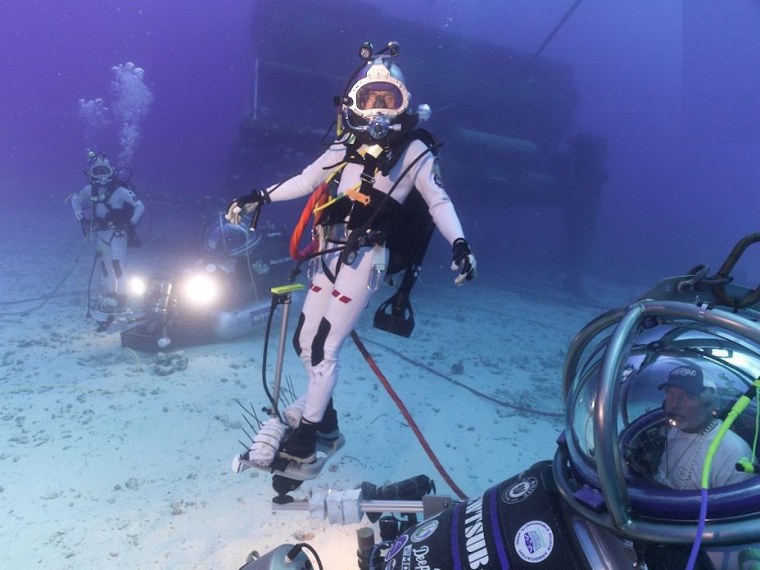
Undersea space mission
Aquanauts take on a simulated spacewalk near the Aquarius underwater habitat in the Florida Keys on June 18. NASA sent a crew to live for two weeks on the Aquarius facility, to test the tools and techniques that may come into play during a future mission to a near-Earth asteroid.
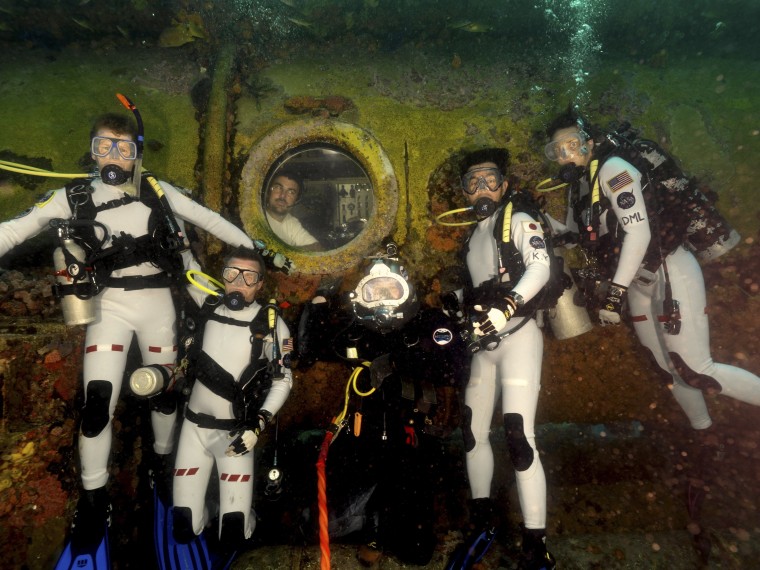
Portrait in the deep
The aquanauts taking part in NASA Extreme Environment Mission Operations, or NEEMO, line up in front of the Aquarius underwater habitat off the coast of Florida's Key Largo on June 11. The NEEMO 16 crew simulated an asteroid exploration mission on the ocean floor for almost two weeks.
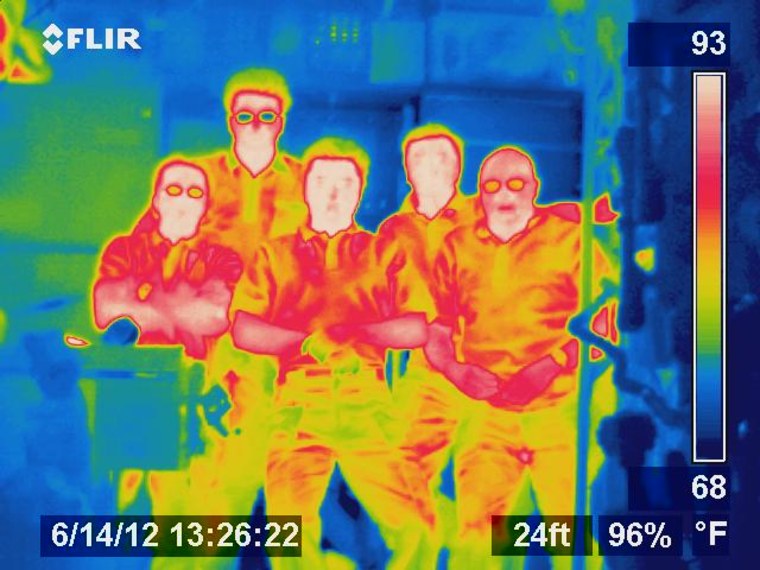
Portrait in orbit
NASA astronaut Don Pettit took this June 14 picture of his crewmates on the International Space Station - Joe Acaba, Gennady Padalka, Oleg Kononenko, Sergei Revin and Andre Kuipers - using a far-infrared camera. "If Matisse and Van Gogh worked together to make a crew portrait, this is what it might be like," Pettit wrote.
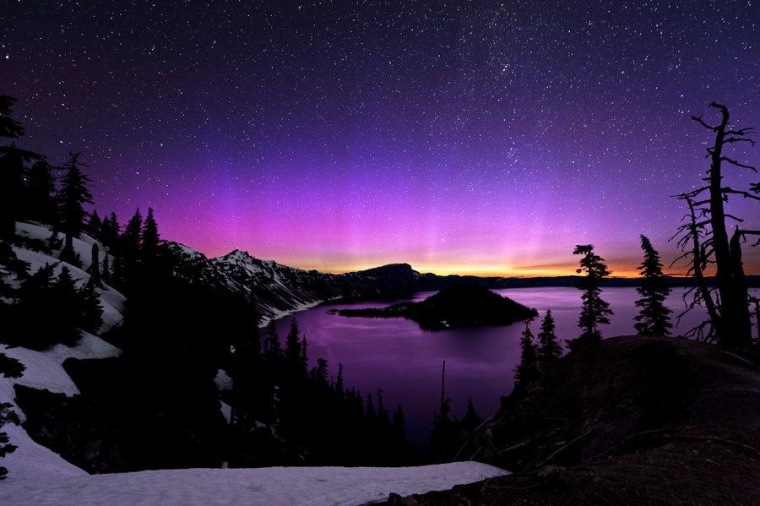
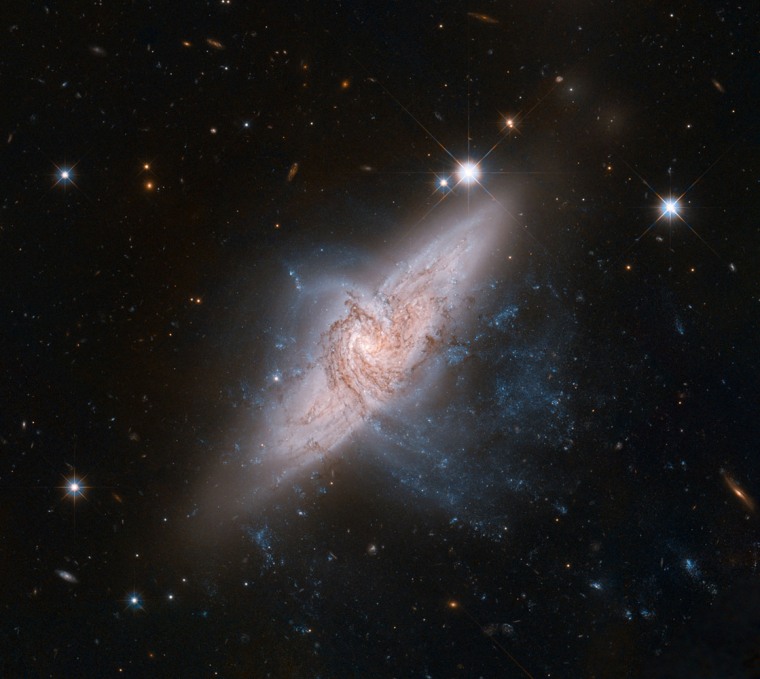
Cosmic illusion
The Hubble Space Telescope produced this incredibly detailed image of a pair of overlapping galaxies called NGC 3314. The picture, released June 14, makes it look as if the two galaxies are colliding - but that's just a trick of perspective. One galaxy is actually tens of millions of years behind the other one.
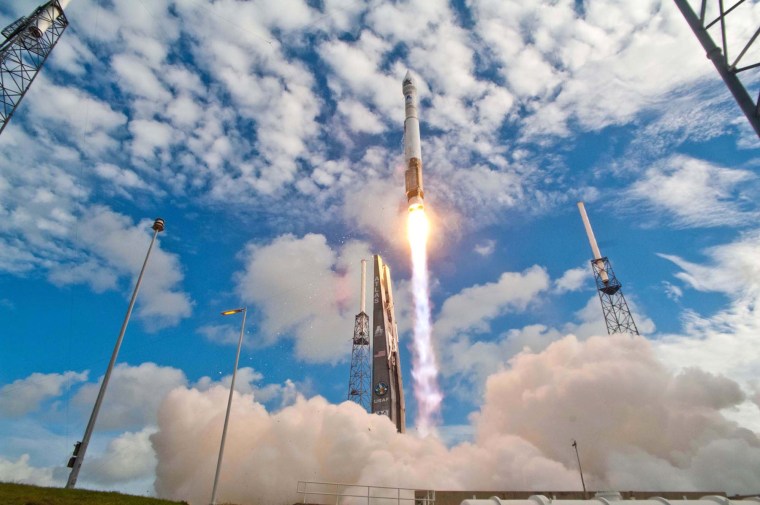
Shhh! Spy satellite launched
A United Launch Alliance Atlas 5 rocket sends the classified NROL-38 spy satellite into orbit from Space Launch Complex 41 at Cape Canaveral Air Force Station in Florida on June 20. The satellite will be used by the National Reconnaissance Office.
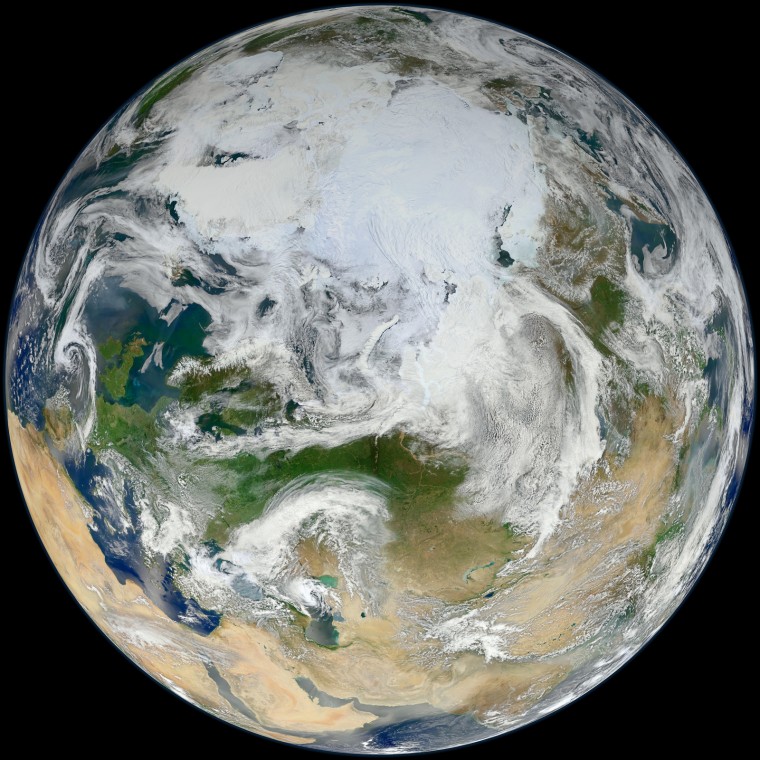
White Marble
This composite view of the Arctic, Europe and Asia was assembled from imagery provided by the Suomi NPP satellite, which gathers weather and climate data. The image, nicknamed the "White Marble," is part of NASA's Blue Marble series of full-disk Earth images.
More 'Blue Marble' imagery from NASA
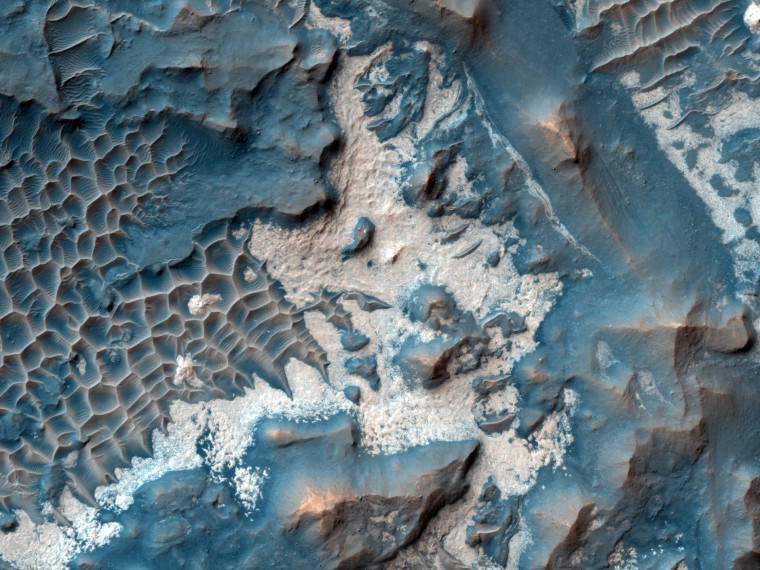
Weird terrain on Mars
Bright, layered material lies on the bottom of a trough in the Martian region known as Noctis Labyrinthus, "the Labyrinth of the Night." Scientists believe the bright material may have been formed in ancient times when water welled up into the low-lying depression, or when ice in the trough melted due to heating from volcanic activity. This picture, captured by NASA's Mars Reconnaissance Orbiter and released on June 13, is shown in false-color shades that accentuate differences in surface composition.

Mickey Mouse on Mercury
This picture, acquired by NASA's Messenger orbiter on June 3, shows an area of the planet Mercury's surface northwest of a crater recently named Magritte. The shadowing helps define a striking resemblance to Disney's Mickey Mouse character, created by the accumulation of craters over Mercury's long geologic history.
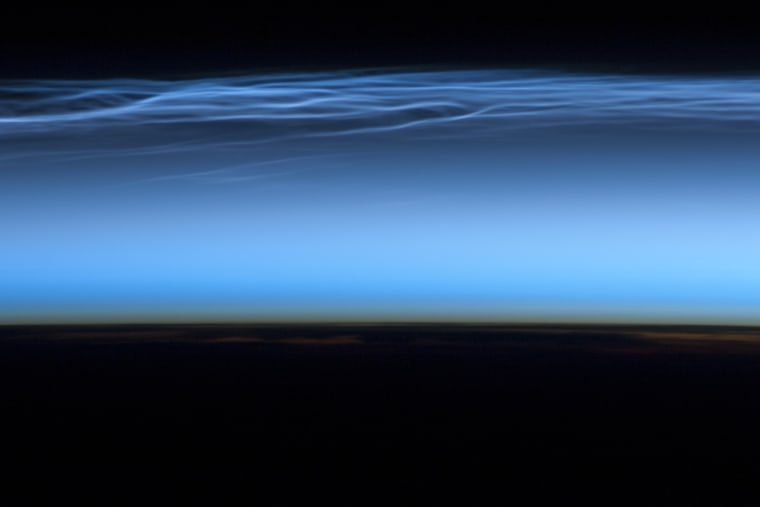
Glow in the night
This picture of night-shining clouds, also known as noctilucent clouds or polar mesospheric clouds, was taken from the International Space Station on June 13 as it was passing over the Tibetan Plateau. Such clouds are illuminated by the sun when it's just below the horizon, and are most commonly seen during the late spring and early summer. Recent research suggests that changes in atmospheric composition or temperature have caused polar mesospheric clouds to become brighter over time.